|
|
|
MASERATI 300 S SPIDER BIPOSTO 2 SEATS
1:18 CMC (M105)
Year/Anno : 1956
Color : Red/Rosso
My rating/Mio Voto : 94/100
Materiale: Die-cast metallo
Clicca il banner in alto per tornare alla Homepage e visionare altri modelli.
Click on the banner on the top of this page to return at the Homepage and see all the other models of my collection.
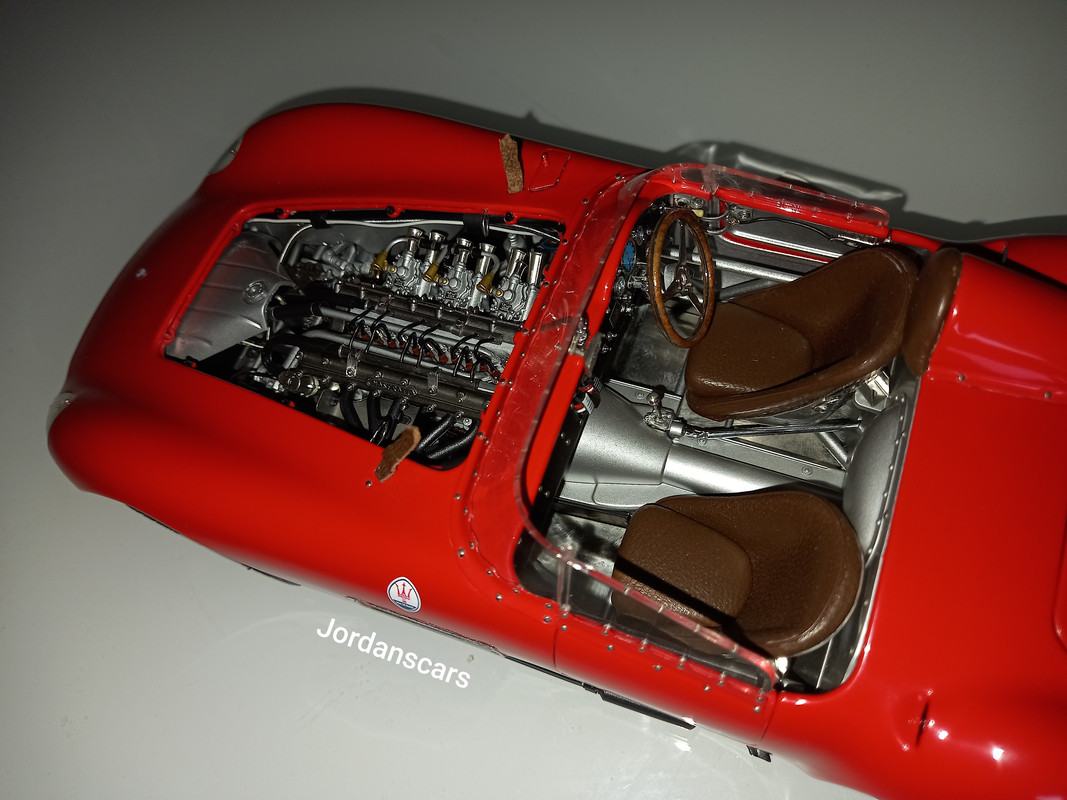
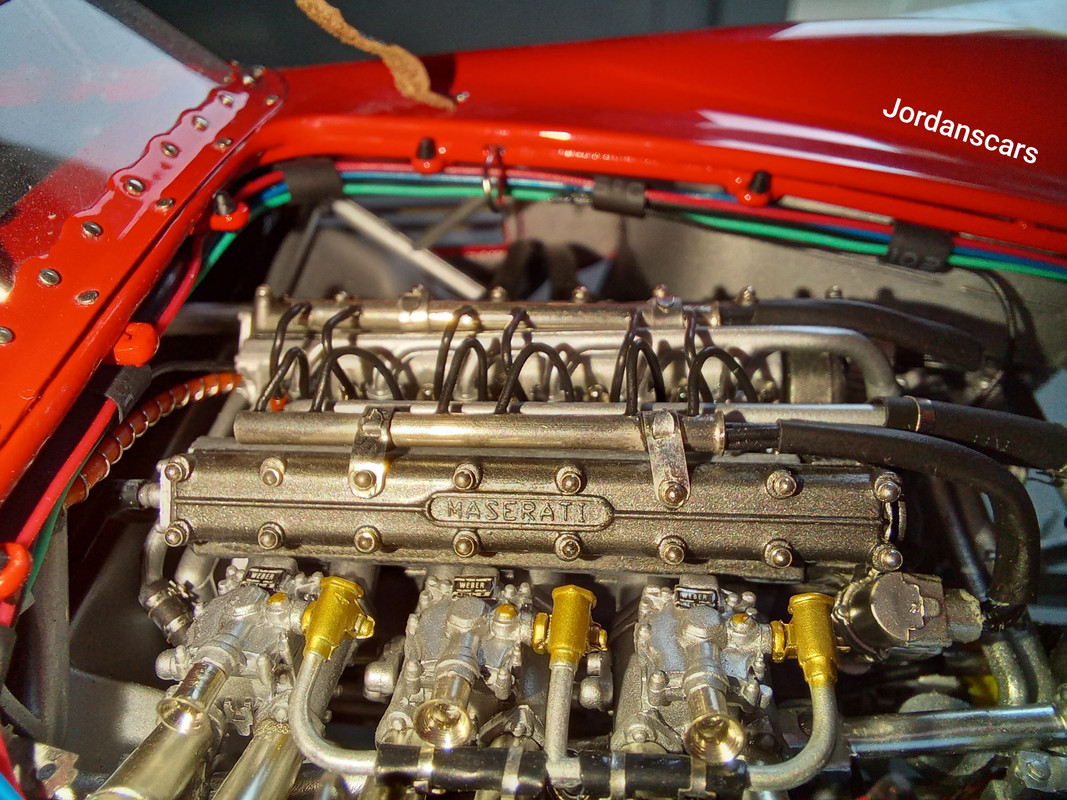




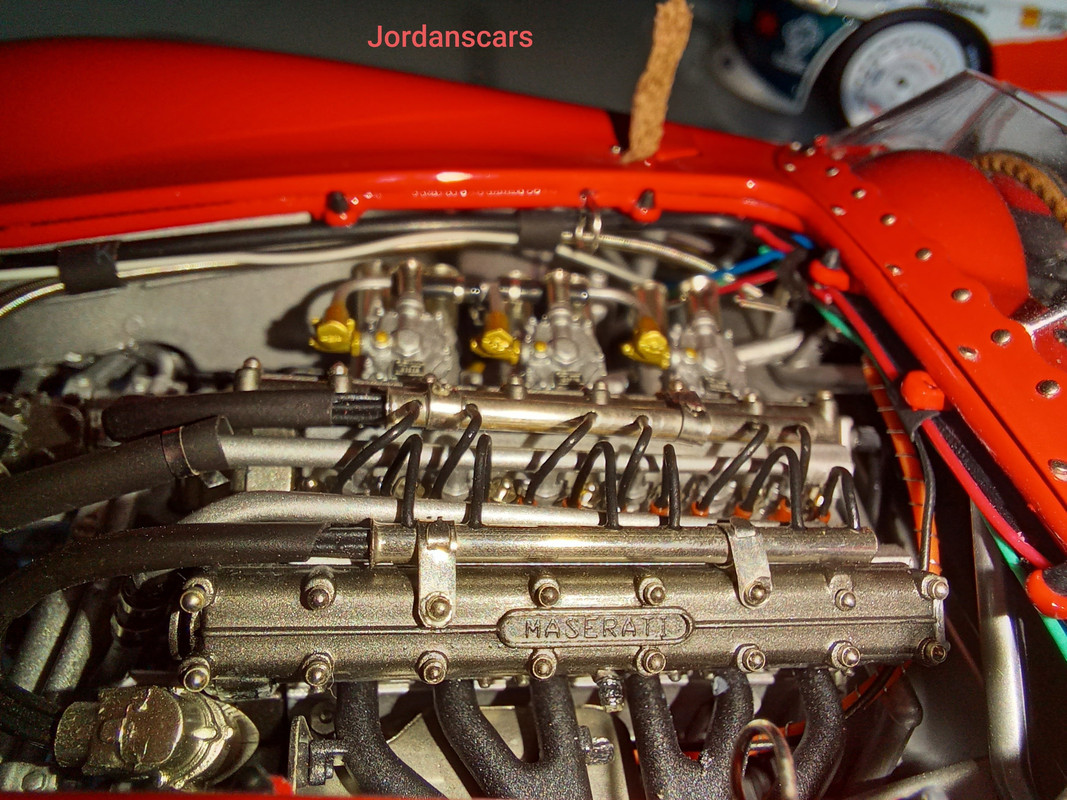
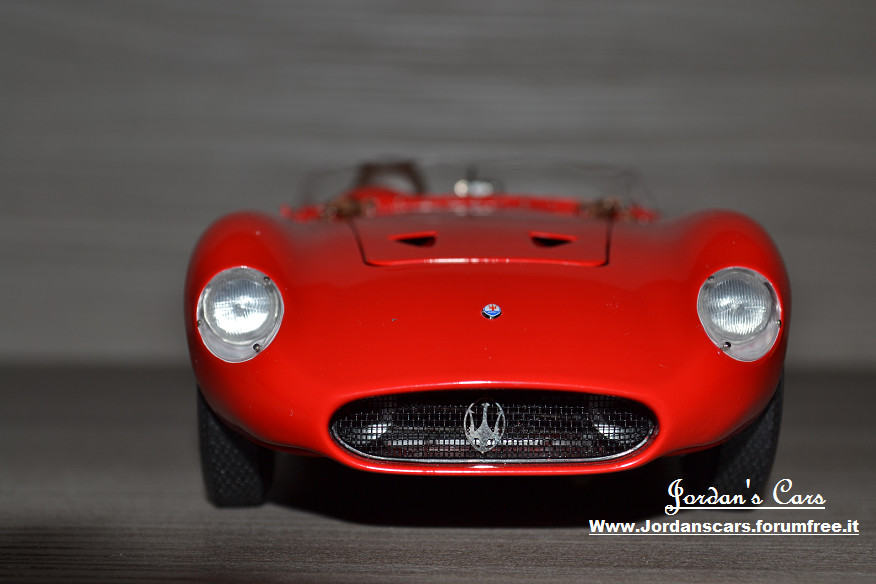
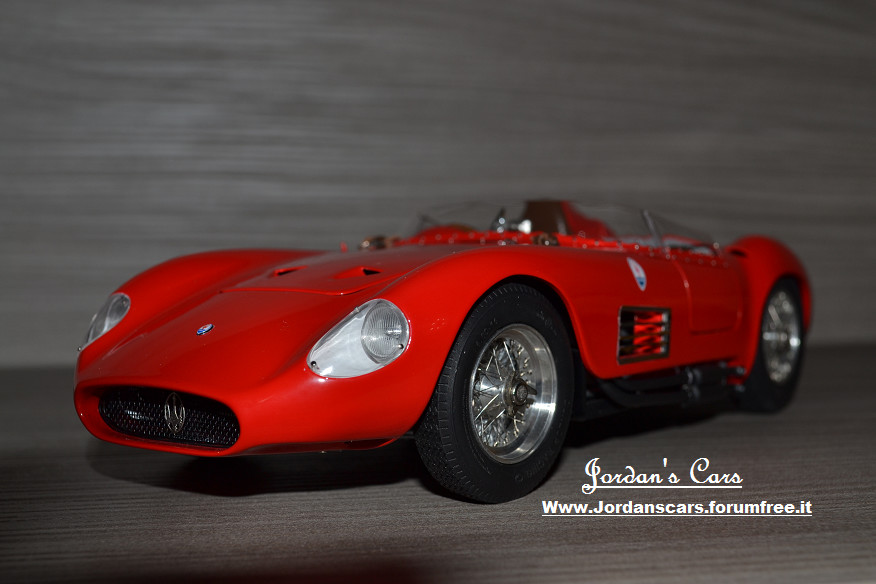
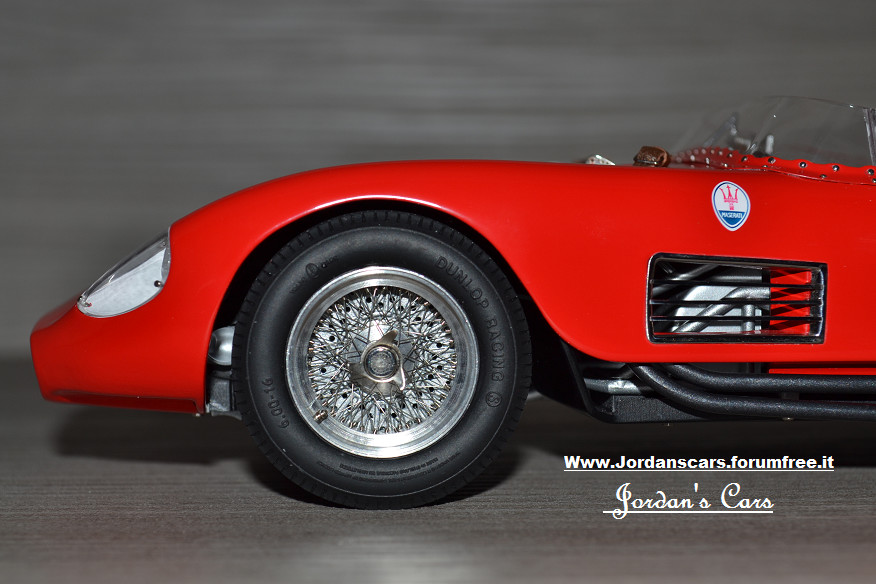
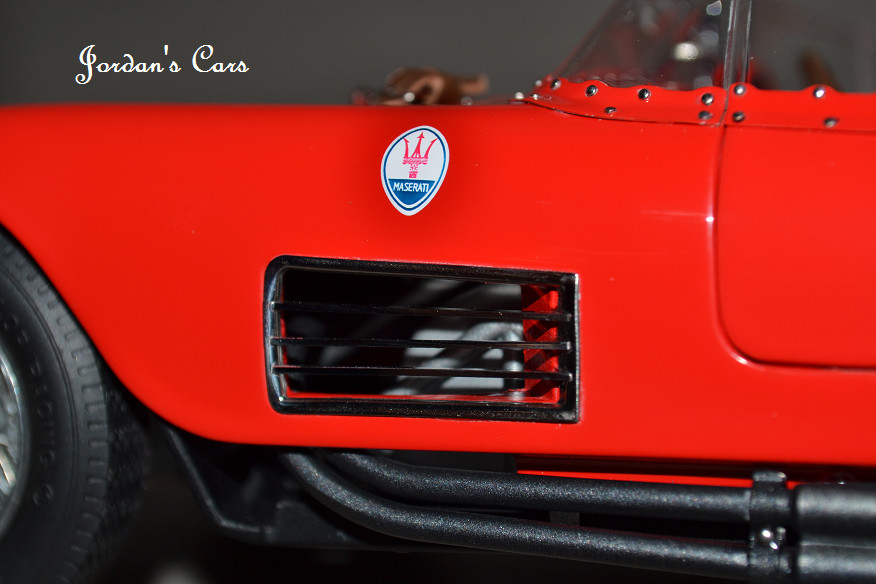
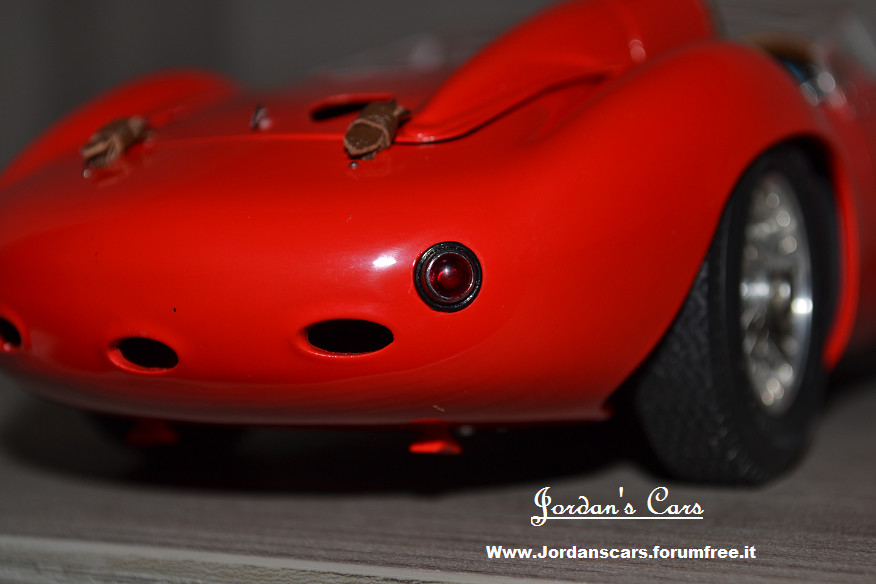
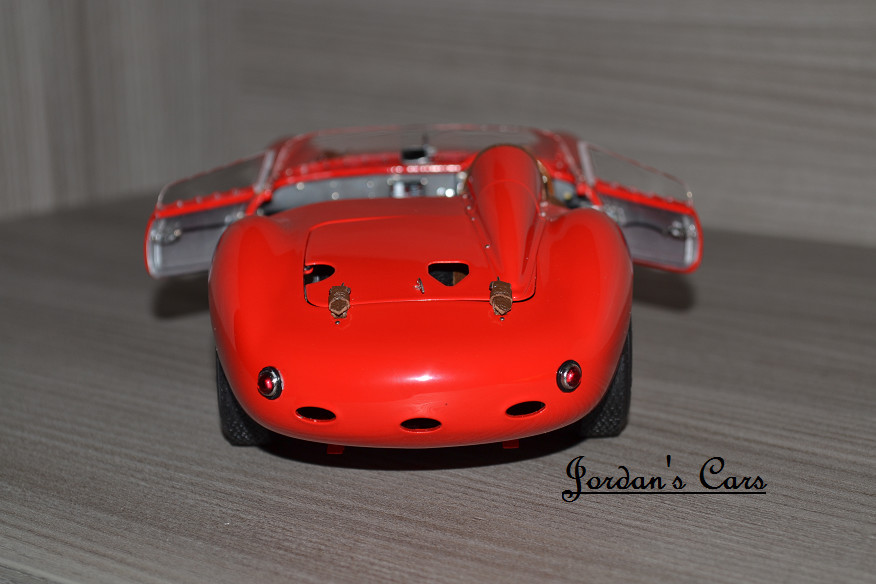
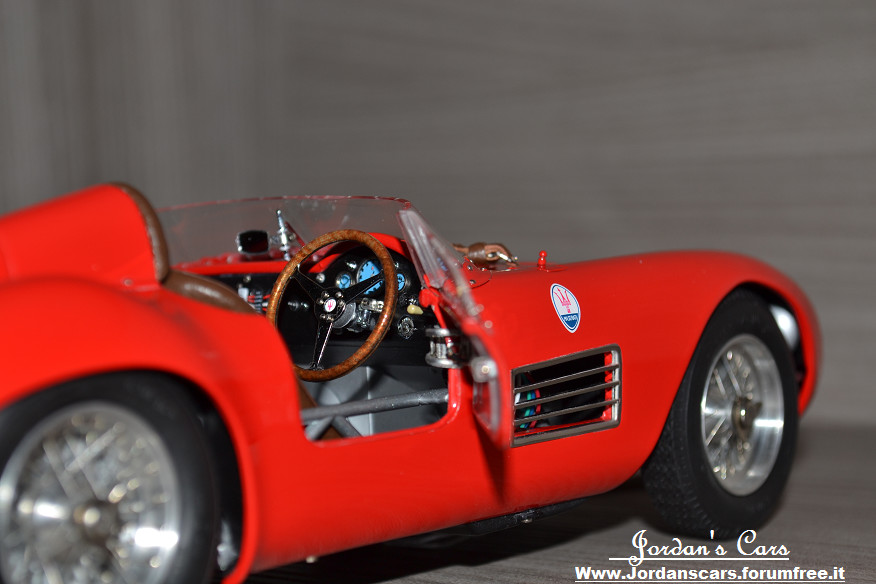
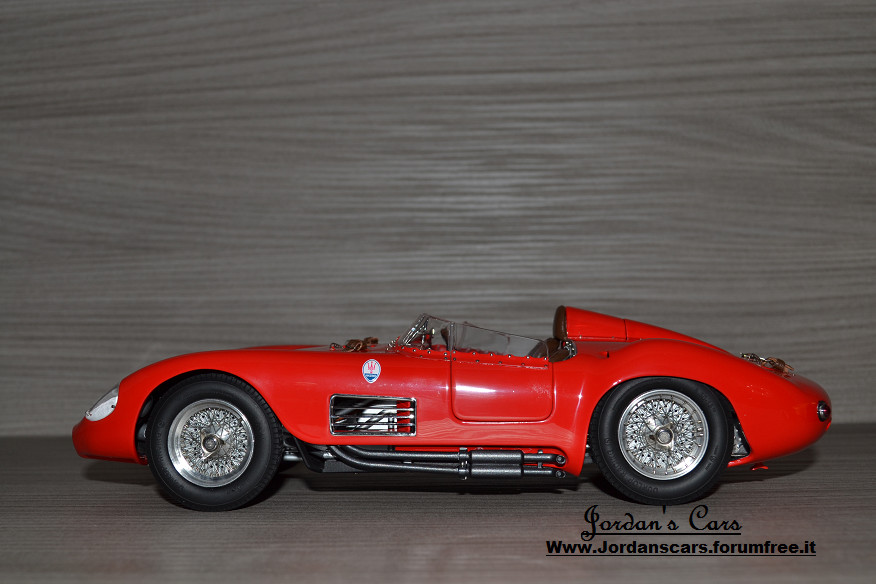
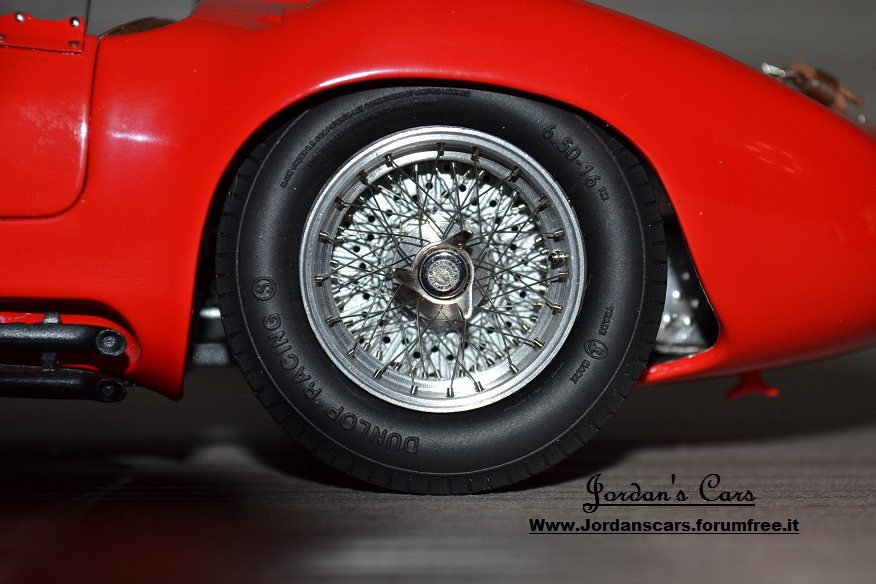
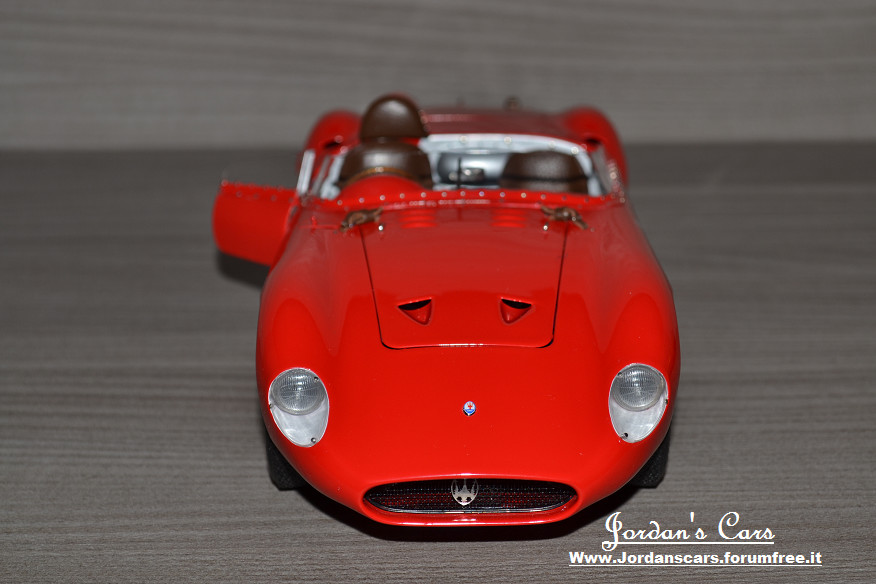
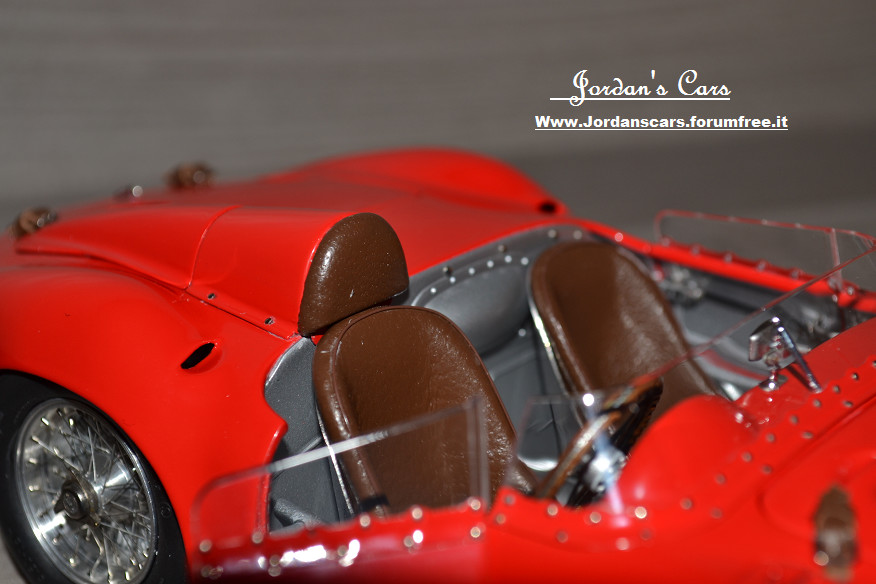
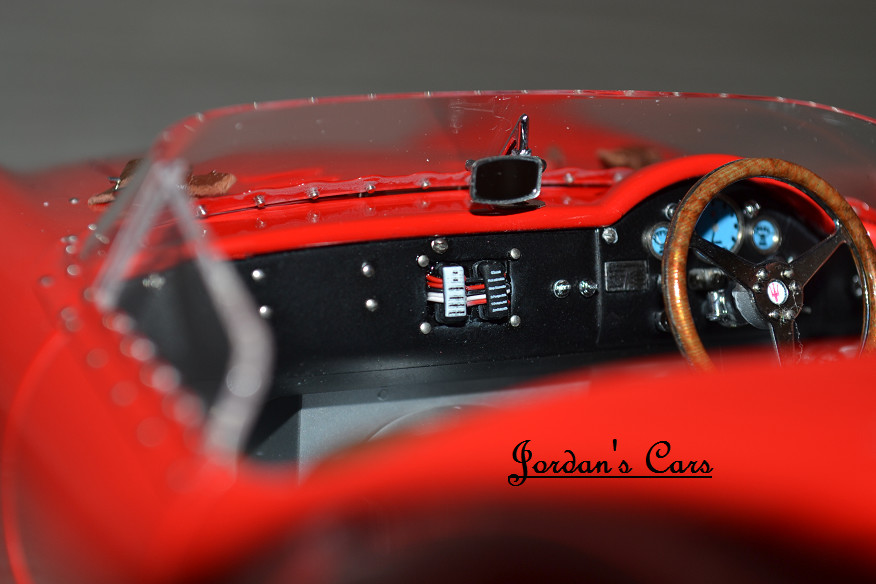
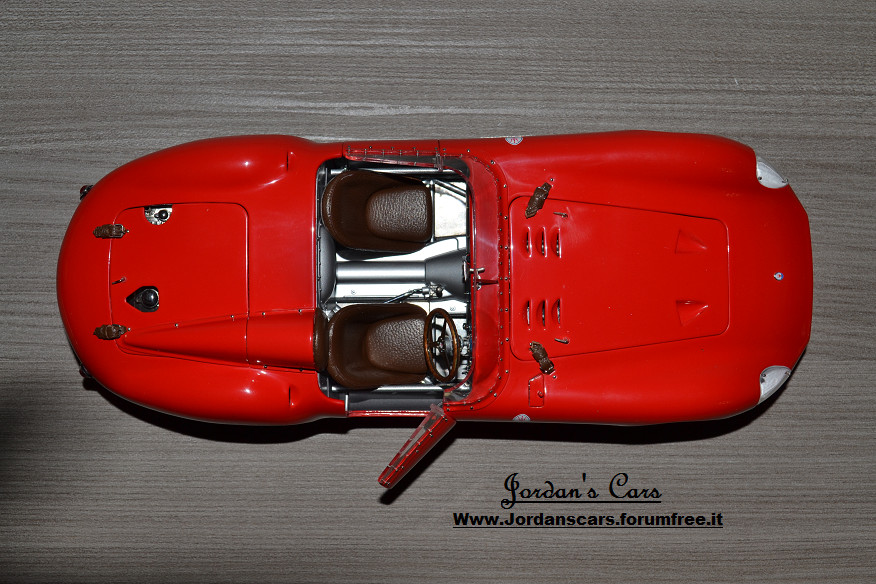
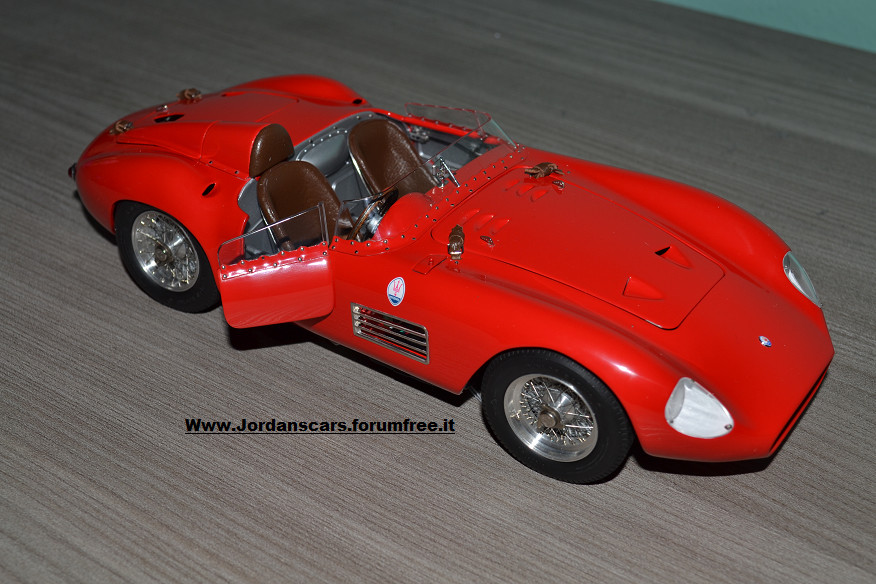
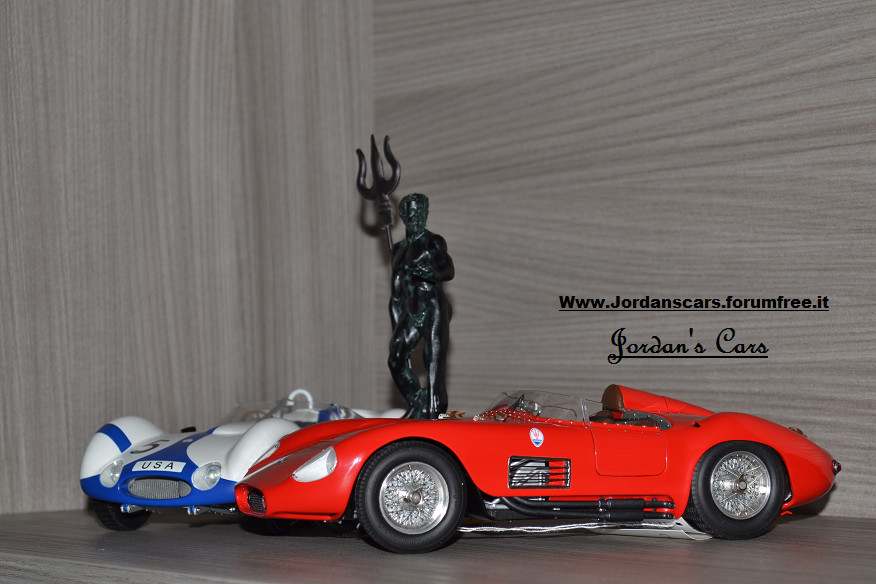
STORIA(Wiki) IT-EN-DE:
La 300S è stata una autovettura da competizione costruita dalla Maserati dal 1955 al 1958. È stata prodotta in 26 esemplari ed ha partecipato al campionato mondiale sportprototipi organizzato dalla FIA.
Il motore in linea a sei cilindri aveva una cilindrata di 2992,5 cc ed erogava una potenza di 245 bhp a 6200 giri al minuto. L'alesaggio dei cilindri era di 84 mm mentre la corsa era di 90mm. Aveva un doppio albero a camme in testa. Fu un propulsore a corsa lunga di nuova progettazione, sviluppato da Vittorio Bellentani. Erano installati tre carburatori tipo Weber 42 DCO3, più tardi 45 DCOE[1]. Motore anteriore, trazione posteriore (schema transaxle).
Il telaio veniva prodotto dalla Gilco Telai sotto la consulenza di Gilberto Colombo e per esso fu usata una struttura a traliccio al posto di quella tubolare installata sulla Maserati 250F. La carrozzeria era in alluminio e fu realizzata da Medardo Fantuzzi. Il freno era a tamburo con comando idraulico sulle quattro ruote. Le sospensioni anteriori erano a molle elicoidali con ammortizzatori idraulici Houdaille e barra stabilizzatrice. Quelle posteriori a ponte De Dion, a balestra trasversale, ammortizzatori idraulici Houdaille e barra stabilizzatrice. La trasmissione era a quattro rapporti più la retromarcia. Dal 1957 fu installata la quinta marcia[1]. Aveva due porte ed era cabriolet.
La “300S” vinse alla 1000 km del Nürburgring nel 1956 e divenne seconda nella classifica generale. Sul fronte della progettazione, Giulio Alfieri fece un tentativo di montare l'alimentazione ad iniezione. Al termine della stagione fu seconda dopo una Maserati 450S ed una Maserati 350S. Il modello vinse nel 1956 anche a Buenos Aires, al Gran Premio del Venezuela, all'Australian Tourist Trophy e al Nassau Trophy . Nel 1957 vinse ai Gran Premi di Cuba, San Paolo, Lisbona e Palm Springs, negli Stati Uniti. Dopo la tragedia di Guidizzolo (1957) che pose fine alle corse di velocità su strada in Italia, le ultime 300S furono vendute negli USA. La velocità massima era di 290 km/h . Una “300S” con il nuovo motore V12 divenne la terza Maserati 350S.
Mark Knopfler dei Dire Straits possiede da tempo una “300S” che ha regolarmente usato nelle competizioni di auto storiche.
______________________________________________________
The Maserati 300S was a racing car produced by Maserati of Italy between 1955–8, which competed in the FIA's World Sportscar Championship. Twenty eight examples were produced.
The 3.0-litre (approx 245 bhp (183 kW) at 6200 rpm)[citation needed] engine was based on the Straight-6 design of the Maserati 250F and incorporated a lengthened stroke developed by Vittorio Bellentani to increase the capacity from the original 2.5-litres. The compression ratio was reduced from 12:1 to 9.5:1, partly due to the FIA regulations requiring the engine to be run on road car fuel. It used three Weber carburettors, initially 42DCO3, later 45DCO3. A trellis structure was used instead of the tubular one of the 250F, and the aluminium body was by Medardo Fantuzzi. The brakes were the same as the 250F, precisely machined alloy drums with extensive fining. The suspension was also of the same design as the 250F but with some strengthening to cope with the rougher tracks and road surfaces encountered in WSC racing. New features for the 300S included the incorporation of a De Dion type rear axle, a transverse four-speed gearbox and two chain driven camshafts.
After a poor showing in the first season (1955) due mainly to mechanical malfunctions and development problems, it won at the Nürburgring in 1956 and finished second overall. It was second to the Maserati 450S, and was followed by the Maserati 350S. After the Guidizzolo accident (1957), the last few 300S were sold to customers in the USA. Giulio Alfieri gave up an attempt to fit it with fuel injection. One 300S was developed with the new V12 engine, becoming the Maserati 350S.
Mark Knopfler of Dire Straits fame is a long term owner of a 300S and has raced the car in historic competitions.
__________________________________________________________
Der Maserati 300S, auch Maserati 300 Sport, war ein Sportwagen-Prototyp, der 1955 bei Maserati entwickelt wurde.
Der Maserati 300S war eine Weiterentwicklung des Tip 2500 Sport, der offiziell als Talbot 2500 Sport bezeichnet wurde, weil er aus einer Zusammenarbeit zwischen Maserati und Automobiles Talbot entstand. Der Aufbau der Fahrgestelle aus runden und ovalen Rahmen wurde zuerst bei Maserati begonnen und in weiterer Folge bei Gilco Design abgeschlossen. 1956 wurde der Vorderwagen verlängert und 1957 die Karosserie komplett überarbeitet. Bei der Arbeit am Maserati 200SI hatte man bei Maserati aerodynamische Studien durchgeführt, die auch in den 300S flossen. Ab 1957 wirkten die Wagen weniger bullig, die Linienführung war harmonischer und runder geworden. von den insgesamt 27 gebauten Fahrgestellen wurden 1957 noch sechs gefertigt, obwohl der 450S längst der Einsatzwagen des Werksteams war. Der 300S war jedoch ein beliebtes Kundenfahrzeug und für Maserati ein finanzieller Erfolg. Die Nachfrage der Privatteams musste daher erfüllt werden. Die Karosserien fertigte Fantuzzi, allesamt rechtsgesteuerte Spyder-Versionen, von denen keine wirklich baugleich wie die andere war.
Als Motor war ursprünglich ein 2,8-Liter-6-Zylinder-Reihenmotor mit Bohrung und Hub von 89 × 75 mm gefertigt worden. Vittorio Bellentani war ein Verfechter des langen Hubs. Er wollte Motoren mit hohen Kolbengeschwindigkeiten und mehr Drehmoment bei niedriger Drehzahl. Die ersten Testfahrten mit dem neuen Motor verliefen allerdings wenig zufriedenstellend. Betrieben wurde der Motor mit Alkohol. Schlussendlich entschied sich Giulio Alfieri für einen 3-Liter-6-Zylinder-Motor mit drei Weber-Vergasern und Doppelzündung. Als Leistung wurden 260 PS (191 kW) angegeben. Das Getriebe war mit dem Differential verblockt. Hinten gab es Querblattfedern und vorne Schraubenfedern. Die 300S hatten Trommelbremsen. Das Leichtmetallgehäuse hatte sternförmig angebrachte perforierte Kühlrippen. Das sorgte für mehr Kühlung bei Hitze und ließ bei Regen das Wasser leichter ablaufen. Die Bremskolben wurden hydraulisch betätigt. Als Höchstgeschwindigkeit wurde von Maserati der Wert von 290 km/h angegeben.
1958 wurden drei Fahrgestelle mit V12-Motoren aus dem Formel-1-250F ausgestattet, die unterschiedliche Bohrung und Hub hatten. Durch das Einstellen der Motorsportaktivitäten von Maserati kam dieses Projekt zum Stillstand.

MODELLI CORRELATI/RELATED MODELS:
MASERATI TIPO 61 BIRDCAGE ---> https://jordanscars.forumfree.it/?t=69094282
Edited by xJORDANx - 5/2/2021, 13:39
|
|





























